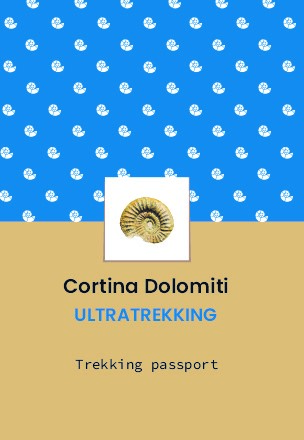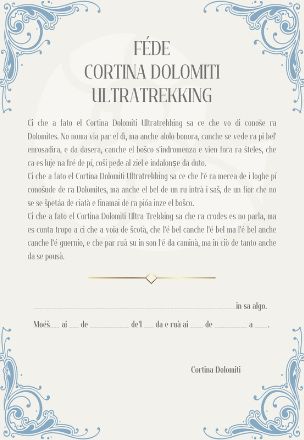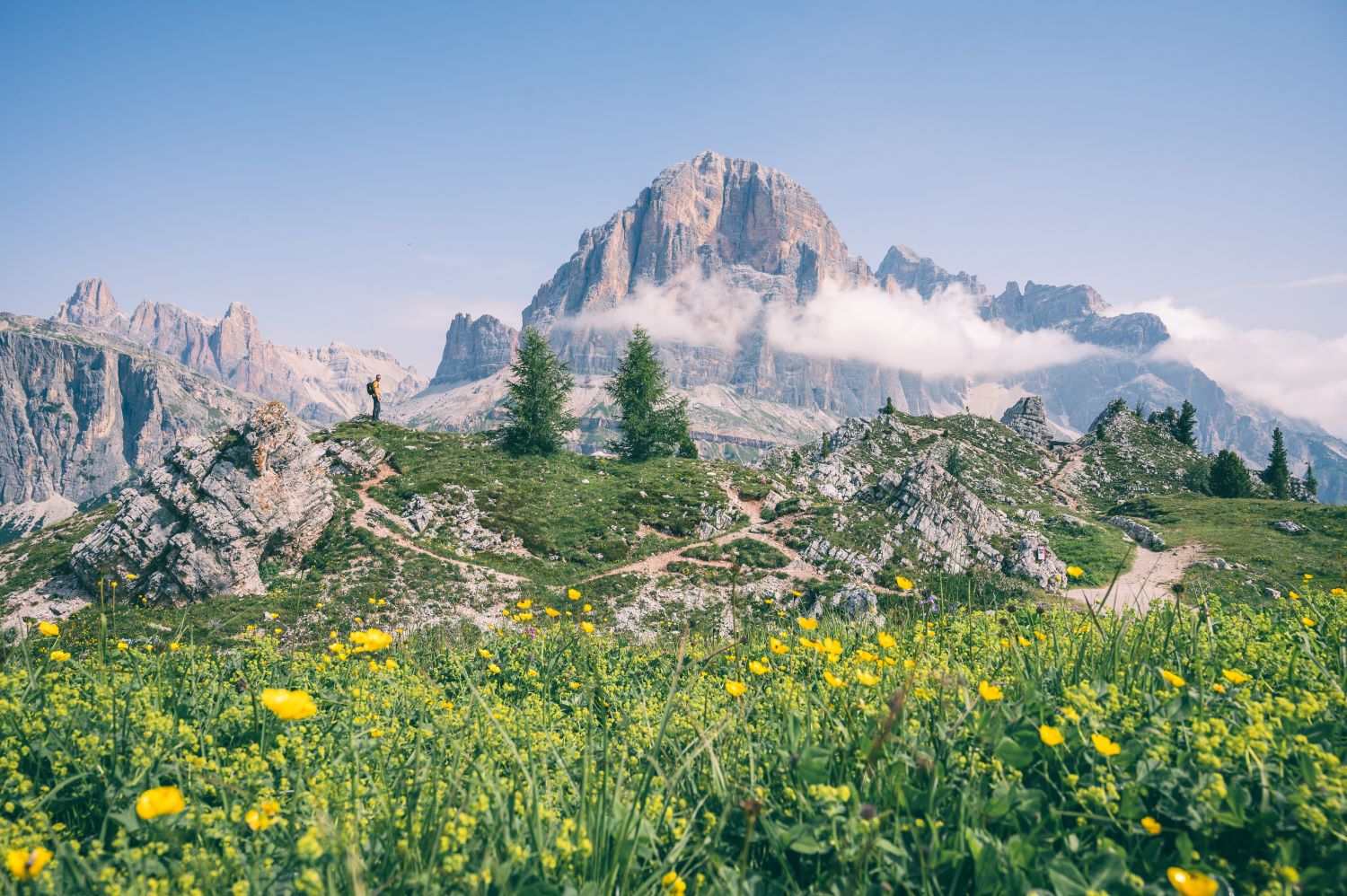A 7-day challenge with overnight stay in a refuge, 132 km and over 6700 m of altitude difference to explore forests, rivers, mountain pastures, typical Ladin traditions, lakes and peaks.
Before setting off, go to the Tourist Office (Corso Italia, 81) to collect the sheet to put the stamps on each refuge. At the end of the venture, returning to the Tourist Office and showing the stamps, you will receive a parchment of recognition in Ampezzo.
It can also be undertaken in a reduced version and the accompaniment of an Alpine Guide is recommended in order to fully enjoy the experience.



USEFUL TIPS:
In your rucksack (30-40 litres for women, 35-45 litres for men)
We recommend using technical materials and synthetic fibres, inserting contents into strong plastic bags to protect them from the rain.
Footwear: this should be broken in (don’t start out in new boots!) and at least one size larger than your usual size. We recommend ankle-boots in Goretex to prevent sprains on uneven paths and steep slopes.
Hiking sandals: these can be worn when resting but also along the trail, in case of painful feet and wherever the terrain permits.
Socks: fundamental for preventing blisters: they must be hiking socks, of good quality, with padded toe and heel.
Telescopic walking poles: very useful for lightening the load on feet and legs; they help crossing fords and walking on steep paths.
Other items:
Long and short trekking trousers
Towel in technical textile
Water bottle or backpack water bladder
Hat and sunglasses
Sun cream
Backpack rain cover
Toiletry bag
Climate and recommended times of year
Which are the best seasons for the Cortina Dolomiti Ultratrekking route? The best periods for which to organise the trip are June and September.
Physical preparation
The complete Cortina Dolomiti Ultratrekking route is a challenging itinerary. Therefore, if your physical fitness is not at its highest levels, we recommend planning just a few stages.